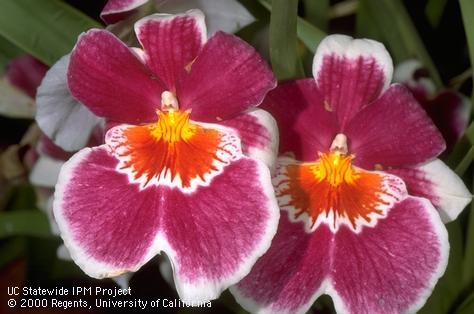Indoor Plants
By Jackie Woods UCCE Master Gardener
While most of us gardeners are happily focusing on outdoor projects, why not entertain the idea of purchasing a few indoor plants that are both easy to care for as well as beneficial to one's health? Indoor plants are esthetically pleasing to the eye and allow for all gardening enthusiasts to enjoy having an indoor garden as well. But did you know that certain indoor plants actually purify the air that we breathe by removing toxic agents?
Back in the late 1970's, high gasoline, heating and cooling costs took a toll on business and homeowners. In order to conserve energy and save money, buildings and homes were being designed to be more energy efficient. These design changes included maximizing insulation which in turn reduced fresh air exchange. When workers and homeowners occupied these super-efficient, air-tight buildings, various health issues such as itchy eyes, skin rashes, respiratory and sinus congestion, headaches and other allergy symptoms became more common. The symptoms collectively became known as ‘sick building syndrome.”
In 1989, the National Aeronautics Space Administration (NASA) came to the rescue by conducting a study in association with the Associated Landscape Contractors of America (ALCA) called the NASA Clean Air Study. This study researched ways to clean air in space stations using various houseplants. As all plants absorb carbon dioxide and release oxygen, these specific air-purifying plants (see partial list below) also eliminate toxic gases such as benzene, formaldehyde and trichloroethylene – gases which synthetic materials used in energy-efficient buildings were known to emit. By eliminating these toxins, air-purifying plants essentially neutralize the effects of ‘sick building syndrome.' The NASA research also states that efficient air cleaning is accomplished with at least one air-purifying plant per 100 square feet of office or living space.
Air-purifying plants are Barberton daisy (Gerbera jamesonii), English Ivy (Hedera helix), Florist's Chrysanthemum (Chrysanthemum morifolium), Peace Lily (Spathiphyllum “Mauna Loa”), Red-edged Dracaena (Dracaena marginata), Spider plant (Chlorophytum comosum,,Variegated snake plant, mother-in-law's tongue (Sansevieria trifasciata ‘Laurentii')
Other research-based plant studies also indicate that ornamental indoor plants can stimulate both the senses and the mind thus improving performance and mental cognition. So, why not hit the indoor nursery and pick up a few air-purifying plants today? Fill your workplace and home with mother-in-law tongue!
